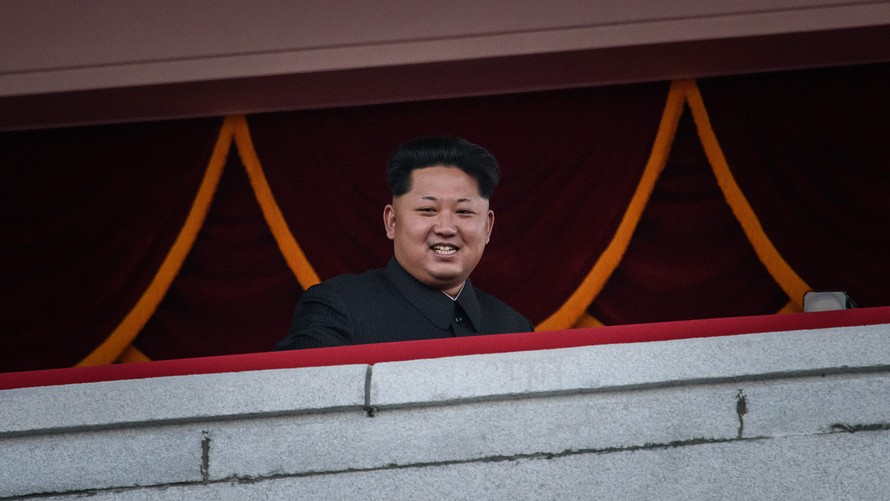The U.S. and North Korea are bearing down on each other for a possible military confrontation that could have historic consequences. President Trump is solipsistic and impulsive, while Kim Jung-Un is homicidal and dictatorial. They are very different leaders, but both are volatile and unpredictable, capable of turning a misstep into a significant military conflict. Public sources like the Federation of American Scientists claim Kim Jung-un already has 13-21 nuclear warheads. However, we know he is trying to develop thermonuclear weapons plus an ability to miniaturize them to fit onto long-range intercontinental ballistic missiles. At the moment, he is on the verge of conducting a sixth nuclear test, but so far seems reluctant to cross this threshold.

China, one of the few friends of North Korea, has strongly urged Kim to defer another nuclear test. The Chinese want to prevent the Americans from getting into an escalatory military tangle with the North that could bring war to the Korean Peninsula along with the economic chaos a full-scale military conflict would inflict on the entire region, if not the world. The American conundrum for dealing with this problem remains the same for Trump as it has for his predecessors. Diplomacy, sanctions and possible negotiations are the only safe avenues to address the North Korean threat, but so far Kim ignores cajoling, diplomacy or any suggestion that his nuclear capability should be capped or eliminated.
If the North conducts another nuclear test, President Trump will feel pressure to maintain the credibility of his threat to “deal with the North Koreans.” But North Korea is not Syria. A few tomahawks will not succeed in sending Kim the strong signal that stopped Syrian President Asad from using chemical weapons again. Instead, Kim may react fiercely by ordering some or all of his 13,000 artillery pieces lining the Demilitarized Zone (DMZ) between North and South to fire its missiles. Seoul and its environs, the capital of South Korea, is just 35 miles away from the border where more than 25.6 million people live, representing up to 50% of the total South Korean population. Seoul is also the political, commercial, financial, and industrial center of South Korea. Any significant conventional exchange could easily escalate to the nuclear level that would impact hundreds of thousands, if not millions, of lives. And fallout from any nuclear use would affect China, Russia, Japan and many countries across the Pacific as well as the United States.
President Trump recently told Philippine President Duterte that the U.S. has two nuclear submarines deployed near North Korean waters. They may be Ohio-class submarines that carry 24 Trident II missiles each with eight nuclear warheads. This revelation by President Trump was released publicly by the Philippines Department of National Defense and is a startling disclosure about the highly classified and sensitive disposition of American nuclear submarine forces. In addition, the Carl Vinson carrier group, with nuclear-armed tomahawks and other nuclear ordinance, remains near North Korean waters. While the U.S. could deploy immense destructive power against North Korea, both conventional and nuclear, one limited American conventional strike could not insure that Kim Jung-un would not respond with force.
To prevent a confrontation, it is critical for China and the U.S. to work together to convince the North that crossing any red line, be it another nuclear test or launching an intercontinental ballistic missile over the Pacific, would result in overwhelming diplomatic and economic sanctions against North Korea.
Russia also needs to be part of this equation, since Moscow is also keenly interested in preventing a war on the Korean Peninsula. The Russian Federation shares a short but direct border with North Korea and a key Russian manufacturing and Pacific port city, Vladivostok, is just a few miles north of there along the Sea of Japan. More critically, Russia has a stake in containing nuclear proliferation and cannot take solace in seeing North Korea develop thermonuclear weapons and long-range missiles that one day Kim Jung-un could use to threaten Moscow and other major Russian cities. Russia has voted consistently in favor of cumulatively harsher sanctions against North Korea and will need to take a clear position if Kim continues to violate blatantly all Security Council resolutions on the North.
While Kim continued to push his nuclear and missile capabilities, China and North Korea actually increased bilateral trade in 2017. Nevertheless, China must be prepared to impose new and severe sanctions against the North if it takes new steps to develop nuclear weapons and long-range delivery systems. One goal of new sanctions should prevent the North from acquiring any hard currency to buy equipment and parts for its nuclear and missile programs. The U.S. could covertly bolster this step with a comprehensive American cyber warfare offensive directed against key sectors of the North Korean economy that support nuclear and missile development. No doubt these steps would impose new hardships on the long-suffering people of North Korea. However, these steps may delay Kim’s efforts to acquire a military capability that will threaten the U.S. and may buy time for diplomacy, a far better outcome than any military conflict on the Peninsula.
While the U.S. is committed to preventing North Korea from becoming capable of attacking the United States, the Trump Administration must consult on next steps with the newly elected South Korean Government of Moon Jae-in. President Moon was elected on a platform to take a softer approach to the North than his impeached predecessor President Park Geun-hye.
The U.S. and China must take a leading role in holding continuing consultations with regional leaders – South Korea, Japan, and the Russian Federation – to address the threat. The U.S. and China could propose Security Council consideration of a sea and land quarantine to block all trade (except food and medicine) with North Korea. That sanction can be linked to holding new nuclear discussions with North Korea to halt further development of its nuclear and missile capabilities and restore normal trade.
Doing nothing is not an option. Taking limited steps in the Security Council like the June 2nd U.N. resolution, while welcome, still lack substantive action to drastically alter the security situation on the peninsula. The hair trigger for a misstep and disaster grows tighter every day that Kim Jung-un remains unbound and unrestrained.


